Howdon STW – Biogas Upgrading Project (2016)
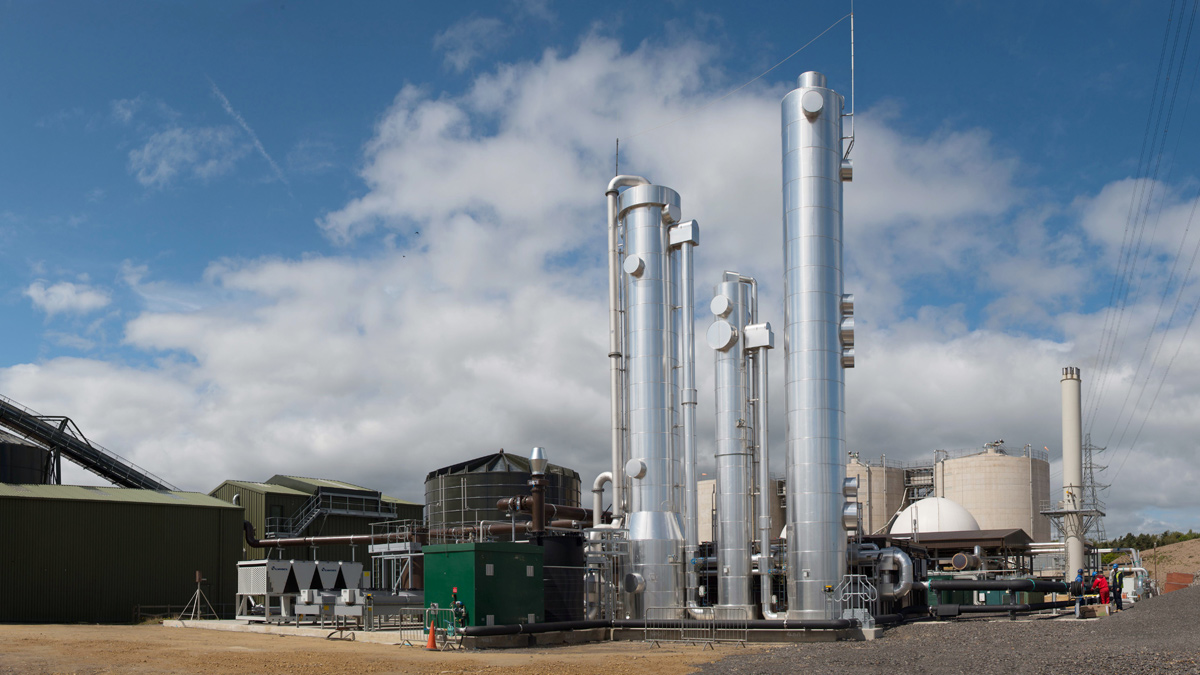
Howdon gas to grid installation - Courtesy of NWG © Witherspoon Photography
The Northumbrian Water Group (NWG) Howdon site, located on the banks of the River Tyne to the east of Newcastle is the largest sewage treatment works on the eastern coast of England. The plant is capable of treating in excess of 40,000 TDS/annum of indigenous and imported sludge using a Cambi Advanced Anaerobic Digestion (AAD) process commissioned in 2012. Biogas produced in the digestion process is supplied to 3 (No.) MWM gas engines each rated for an electrical output of 2MW. Waste heat from the engine exhaust is recovered and used to assist in generating the steam used in the AAD process.
Background
NWG’s corporate aims include a commitment to make their operations more sustainable and to reduce their carbon impact. With this in mind, the company initially commissioned Sweco (then Grontmij) in 2012 to carry out studies into the practical and economic feasibility of alternative uses for the produced biogas.
A key consideration in this was the need to reliably maintain the throughput of the STW during construction and subsequent operation of any new plant.
This commission was subsequently developed further to support NWG throughout the life cycle of the project by assisting with tender package evaluation, providing multi-disciplinary detailed design services and finally with technical support throughout the commissioning and optimisation phases.
Solution
The UK Government promotes the development of a sustainable fuel supply by incentivising gas to grid projects under the Renewable Heat Incentive (RHI) programme. Biogas produced from a digestion process can be treated to produce biomethane, which has a quality equivalent to natural gas, and injected into the gas distribution network. The producer of the biomethane receives a tariff payment proportional to the renewable energy content of the gas injected in addition to the retail sale price of the exported biomethane gas.
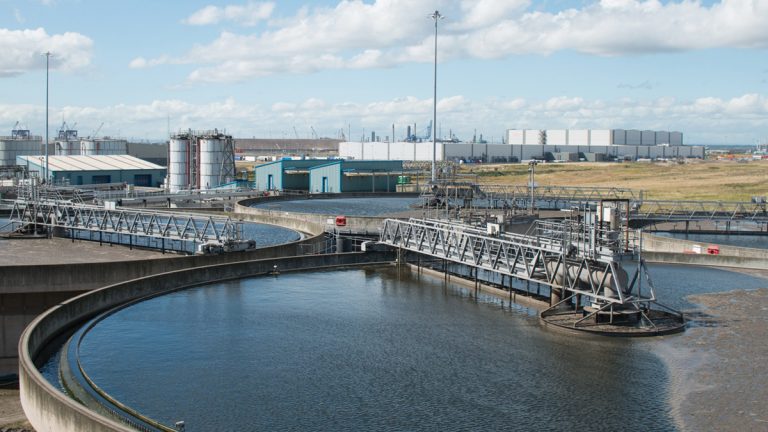
NWG Howdon site – Courtesy of NWG © Witherspoon Photography
At the start of the project, the uptake of gas to grid technology in the UK was not well developed; the technology was well established in mainland Europe but UK experience was limited to small scale installations. Consequently, the RHI tariffs were initially set at a relatively high level to encourage investment in the new process with a view to reducing these as more capacity came on line.
Biomethane injection can recover over 95% of the energy content of biogas as a zero carbon fuel. In contrast, the engine-based CHP installation matched to an AAD process at Howdon has an energy efficiency of around 62%.
Recognising that the environmental benefits and financial incentives favoured larger schemes, NWG took the decision to install an upgrade plant capable of treating all of the biogas produced on the site with capacity for future expansion.
This would make Howdon the largest gas to grid plant in the UK Water Industry and the only one in which the upgrade plant was fully integrated into the waste water treatment process, allowing the entire site biogas production to be exported.
Process
Raw biogas produced by the AAD process at Howdon typically contains between 60 and 62% methane with the balance being made up of carbon dioxide (CO2) and trace contaminants such as hydrogen sulphide, ammonia and siloxanes. In order to make the gas suitable for injection the CO2 and other unwanted components must be removed leaving a biomethane gas with a methane content greater than 97%.
Gas for injection into the national distribution system must meet quality standards defined in the Gas Safety (Management) Regulations (GS(M)R).
In addition to the statutory quality requirements the gas grid Distribution Network Operator (DNO) defines a minimum calorific value for the injected gas. This is set to ensure that consumers, whose energy supply is metered on a volumetric basis, are not penalised. The minimum calorific value is set by the DNO to match the characteristics of the gas in the distribution system, the source and precise blend of which is continually varying. As a result, the target calorific value can change on a daily basis.
Biomethane produced from biogas has a lower calorific value than UK natural gas. In order to meet the specification for injection it is enriched by adding small amounts of propane. This has to be purchased from commercial suppliers and is a direct operating cost. In order to minimise this, it is important to maximise the efficiency of the biogas upgrading process and to control the calorific value to a level as close to the target as possible.
Technology
A typical biomethane injection plant or gas to grid installation can be considered as four main packages:
- Biogas upgrading plant.
- Propane storage and transfer plant.
- Grid entry unit.
- Systems integration package.
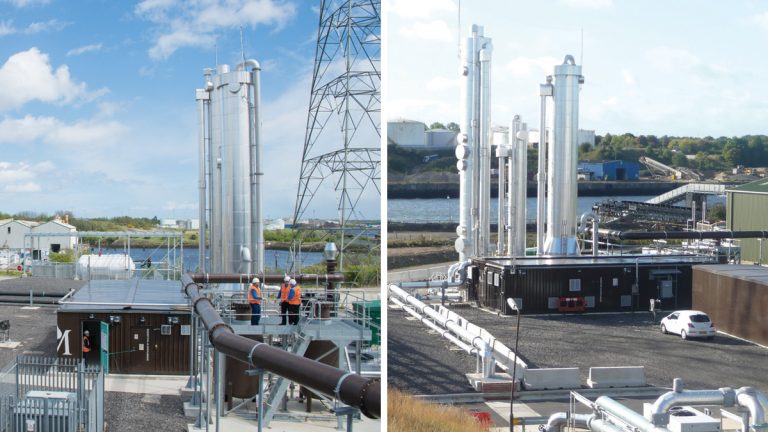
(left) Gas to grid plant overview – Courtesy of NWG © Witherspoon Photography and (right) Water wash plant & propane store – Courtesy of Sweco
NWG carried out a review of available upgrading technology with particular emphasis being placed on suitability for installation, operation and maintenance in a UK treatment works environment. Visits to reference sites in Scandinavia by teams including NWG operation staff were carried out and facilitated by gas to grid specialists from Sweco’s Swedish office.
Following a tendering process the water wash technology offered by Malmberg was selected and procured.
The propane storage and transfer plant comprises the bulk propane storage facility together with liquid propane transfer pumps, propane vapouriser and injection system.
The bulk propane store was provided by Flogas as part of a long-term propane supply agreement.
Two storage tanks each having a capacity of 12 tonnes of propane were installed. The only available location of the site for the storage tanks was under the route of a high-voltage electric transmission line crossing the River Tyne at a height of 40m. In order to comply with the United Kingdom Liquid Propane Gas (UKLPG) Code of Practice for bulk gas installations, it was necessary to install a guard frame above the tanks capable of withstanding the impact resulting from a hypothetical break of one of these transmission lines.
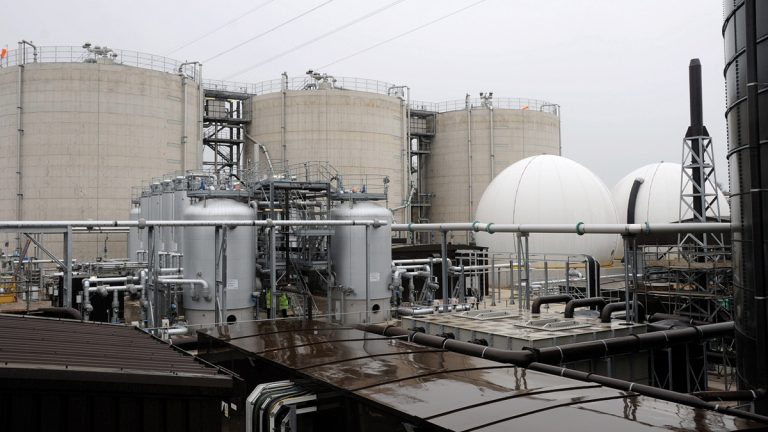
Howdon advanced digestion plant – Courtesy of NWG © Witherspoon Photography
The propane injection system itself was incorporated into the upgrading package. This enabled Malmberg to give commercial guarantees that the gas leaving their package would be fully compliant with the grid specification in all respects.
The grid entry unit (GEU) contains the equipment which analyses the gas to confirm it is of acceptable quality for injection into the grid. Gas quality information is continually transmitted to the DNO, in this case Northern Gas Networks (NGN) by telemetry. Final entry to the grid system is through a remotely operated valve under the control of the DNO.
In the event that gas quality falls outside of the acceptable limits, or the grid is not able to accept gas from the site, this valve will be closed. Due to the extent of certification required, the supply of GEUs for the UK market is limited to a few specialist companies. The GEU for the Howdon installation was procured from Future Biogast.
The upgrade plant, propane storage and transfer plant and GEU were procured from suppliers as standard packages with each supplier providing their standard scope of supply.
Sweco designed the integration package including the civil, structural, mechanical, electrical and systems integration works necessary to connect and service the main equipment packages. This was then implemented by Interserve under a direct contract with NWG. As part of this work, a biogas preconditioning system, incorporating gas boosters and drier, was installed to assist in overcoming some historic problems resulting from excessive moisture in the biogas supplied to the engines.
Challenges
Regulatory: At the start of this project biomethane injection to the grid was in its infancy in the UK. The majority of the gas DNOs were unfamiliar with the process itself and the commercial and regulatory requirements for these schemes. The bulk of the experience was based on natural gas applications where flows and pressures are much higher and composition less of an issue.
One of the key commercial requirements of a gas injection project is the Network Entry Agreement (NEA) which sets out the conditions the gas supplier must meet to allow entry to the DNO system. As Howdon would be the first plant operating in the NGN region, there was no working model of an NEA suitable for a biomethane injection plant. NWG and NGN worked closely to develop a NEA that was commercially and legally acceptable to both parties and recognised the particular technical aspects of a biomethane injection plant. This included agreeing physical and remote monitoring and operating procedures designed to give NGN confidence in the Howdon site as a gas producer.
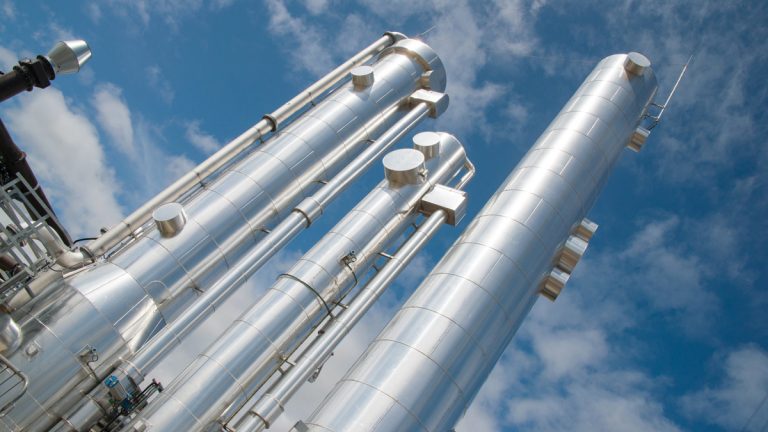
Water wash towers – Courtesy of NWG © Witherspoon Photography
The NEA developed for Howdon has since been used by NGN as a model for other projects.
Grid capacity: The Howdon site is located in a lightly populated area served by an intermediate pressure natural gas distribution system. The demand on this gas supply is mainly residential; consequently there are periods during summer months when demand is lower than the potential output of the biomethane plant. Restrictions on the operation of the plant would have a negative impact on the business case.
Sweco developed financial models to allow evaluation of the impact of this restriction and the returns on the additional capital investment required to mitigate these. Following this evaluation it was decided to convert the three existing engines to allow them to operate on either biogas or natural gas fuel.
As well as allowing the site to generate its own electricity, thereby reducing the need to import from the grid, connecting to the gas distribution network from a separate supply point local to the site created an additional demand without the need to reinforce the entire distribution network. This ensured that the biomethane plant was able to run at full output throughout the year.
The engine conversion itself was carried out by Edina, the original equipment suppliers. This involved installing a second parallel gas train on each engine, together with the ability to select alternative engine mapping and control set ups to reflect the fuel being used.
Automation & control: The design intent is that the upgrade plant interfaces seamlessly with the existing AAD process with facilities to consume biogas during periods of upgrade plant downtime.
It was important that the inclusion of the upgrade plant would not significantly change the established mode of operating the overall site and that as much of the existing control philosophy, systems and practices was retained.
This was achieved by configuring the upgrade plant as the lead consumer in the system with the engines and flare being utilised should the upgrade plant not be able to process the full site gas production. The throughput of the upgrade plant was automatically controlled to maintain a constant level in the gas storage system.
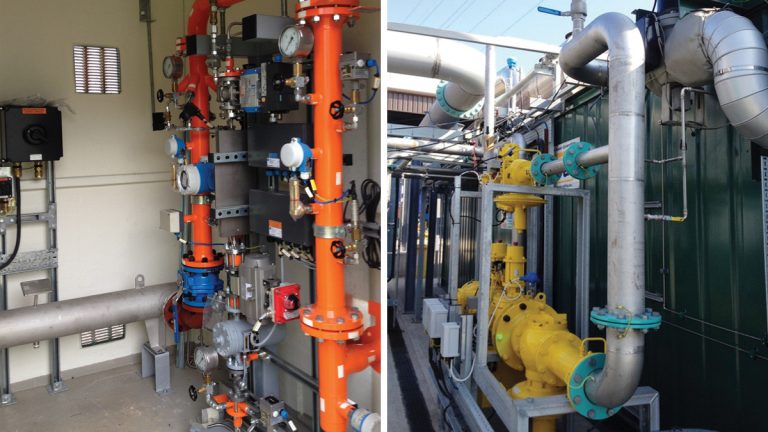
(left) Propane injection equipment and (right) parallel gas manifolds at engines – Courtesy of Sweco
Each package was supplied with the manufacturer’s standard control system. These incorporated programmable logic controllers (PLCs) from a variety of manufacturers leading to concerns about NWG’s systems integration staff being able to maintain systems. Standardisation of these was considered; however this could have led to problems with recertification of safety related software. To overcome this, it was decided to install an interface PLC which, in addition to controlling and monitoring the off-package plant, collected data from the individual plant packages and retransmitted it to the master site SCADA system.
This interface PLC was to NWG standard thereby avoiding any risks associated with non-standard connections into the secure NWG site monitoring and control system.
The control system development and implementation was carried out by IDEC, NWG’s nominated systems integration contractor.
The existing emergency shutdown systems on the site were extended to include the new equipment and developed further to allow periodic testing of critical safety circuits without affecting the continued operation of the plant.
Outturn
The gas to grid plant has been operating since late 2014 and is currently injecting gas at a rate equivalent to around 72,000 MWh per annum.
The improved energy efficiency is displacing around 5,900 tonnes of CO2 per annum. The plant has proven to be highly reliable. As such, it is making a significant contribution towards NWG’s UK target of saving 44MT of CO2 by 2020.




